Culture & Lifestyle
Reconstructing Thecho’s cultural heritage
Temples in Thecho, integral to the area’s festivals and traditions, are being restored after suffering damages in the 2015 earthquake.
Timila Maharjan
Thecho is a culturally vibrant area known for its festivals, traditional music, and major temples like Nawa Durga, Balkumari, Brahmayani, and Pingal. Throughout the year, you can hear the traditional musical instruments being played there on different occasions. These temples, central to the Thecho Jatra festival, were significantly damaged in the April 2015 earthquake. The reconstruction of these temples has been funded by the Department of Archaeology, with the Nawa Durga, Balkumari, and Pingal temples now fully restored, while the reconstruction of the Brahmayani Temple is still ongoing.
Balkumari temple
Balkumari Temple of Thecho, located at Chway Lacchi, was established in 790 Nepal Sambat, though the statue of the goddess existed and was worshipped even before the temple was built. The temple’s main festival occurs during Thecho Jatra, when the Balkumari goddess’s chariot, the Brahmayani goddess’s younger sister, is carried to Pingal, known as the goddess’s maitighar. The temple is managed by four guthis—Para, Chare, Punhi, and Tah—responsible for upkeep and organising annual festivals.
The 2015 earthquake caused significant damage to the already ageing Balkumari Temple. According to Binod Hara Maharjan, coordinator of the Balkumari Purna Nirman Samiti, occasional renovations were previously done with limited funds, and preparations to rebuild the temple had already begun before the earthquake. Before the disaster, a budget of two million rupees per year was allocated to purchase pillars, dalin, and wood for each storey, with plans to demolish the temple only after gathering all materials. However, the earthquake prompted a swift merge of the renovation and reconstruction budgets, leading to immediate demolition and rebuilding efforts.
The Balkumari Purna Nirman Samiti, led by Binod Hara Maharjan and composed of 15 members from the four guthi, was established to oversee the reconstruction of the Balkumari Temple. The construction company Dharma S Tulsi Saptapath JV, Lalitpur, got the contract with a budget of 31.7 million. Demolition began on February 13, 2017, with a tantric puja to remove the temple’s gajur (pinnacle) and was completed in a month.
The temple’s statues and materials were safely stored after performing chyama (forgiveness) puja. Reconstruction began on April 27 2017, with a jag puja led by Shyam Lal Maharjan, the eldest of the four guthi, and was completed on July 10 2020, after the gajur was reinstated with tantric rituals. Donations totalling two million were collected to gold-plate the gajur with 15 tolas of gold, contributed by over 100 donors. Following the reconstruction, the temple’s surroundings, including flooring and falchas, were renovated with funding from Godawari Municipality.
Maharjan explains, “The design of the new temple follows the same model as the old one, as required by the Department of Archaeology. However, a few updates have been made for durability and sustainability. For instance, the roof, originally made of mud tiles, is now copper. Additionally, the new structure includes a space for devotees to walk around the temple, which wasn’t possible before.”
He also mentions that in the old temple, cooking utensils were attached to the structure, but they have now been removed and stored. The utensils made of pital were donated to the Buddha Park, Thecho.
The current statue of the Balkumari goddess is the original one. Maharjan recalls, “It was stolen around 50 years ago but was later found at Bange Dhara, located on the border of Thecho and Sunakothi. It is believed that the statue of Balkumari cannot be taken outside of Thecho.”
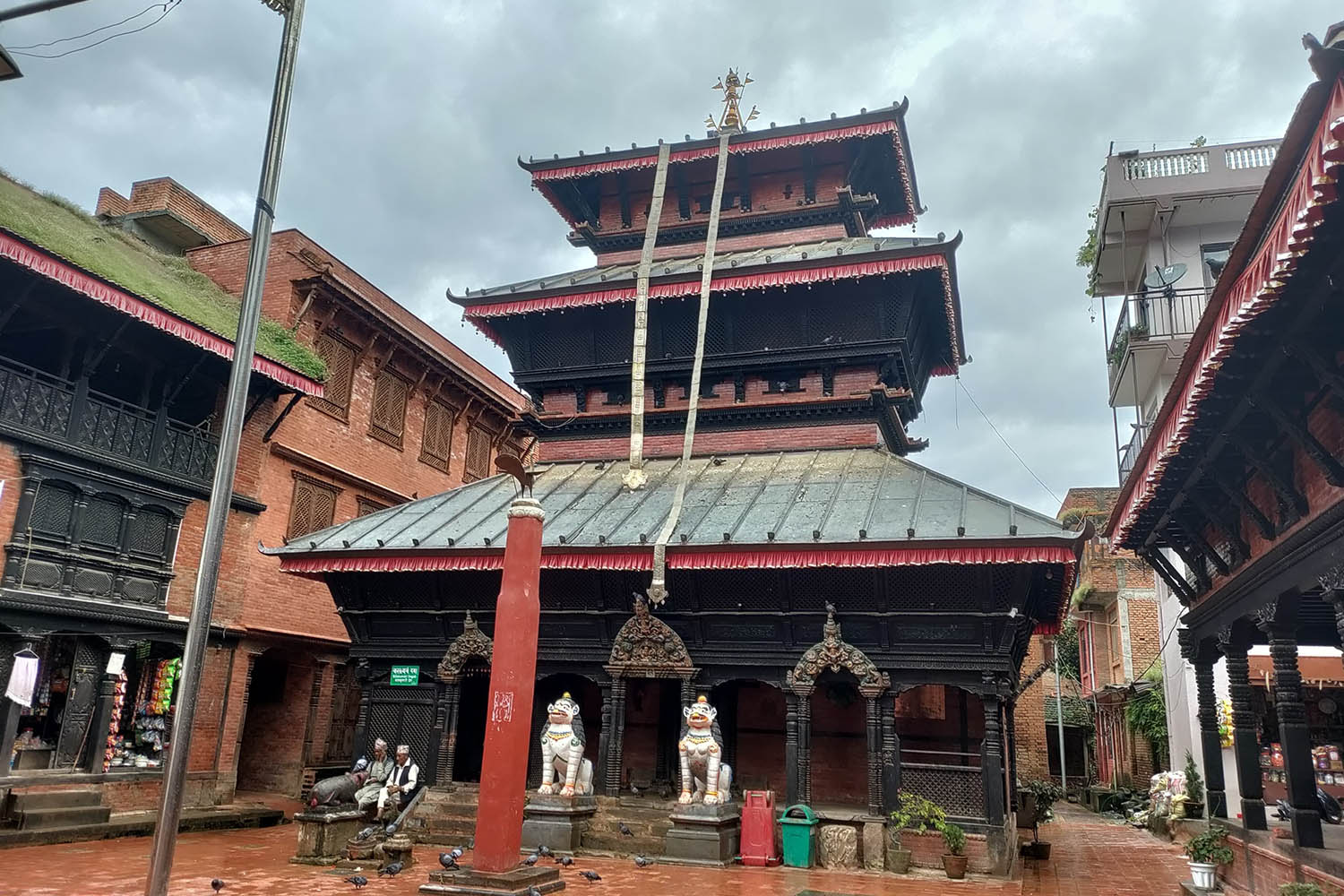
Brahmayani temple
The Brahmayani Temple, located at Kway Lachhi of Thecho, is a temple of a goddess believed to be the elder sister of Balkumari. According to Tulsi Maharjan, guthiyar of one of the Brahmayani guthi, the exact date of establishment is unknown because the Department of Archaeology took the stone inscription after the temple’s demolition. However, the temple predates the Balkumari Temple and is estimated to have been built around 500-600 Nepal Sambat. The major festival associated with this temple is the Thecho Jatra, during which the temple’s chariot is taken to the Pingal Temple on the night of Yomari Punhi. Originally held around Gai Jatra when food was scarce, the jatra was later shifted to November/December for better food availability following the rice harvest.
There are four guthis of Brahmayani temple: Mu guthi, Nhesa guthi, Kuna guthi, and Gwala guthi. No specific committee oversees the reconstruction project, but all guthis members supervise the work.
Sabir Maharjan, a resident of Kway Lachhi, says, “The statue of Brahmayani goddess was shifted to the chapaal on March 4, 2017. Later, on March 12, 2017, the demolition began by taking out the gajur after doing tantric puja and rituals. Then, the reconstruction started in 2018 before the Dashain began.”
Tulsi says, “The temple reconstruction is still ongoing and is expected to be completed by the month of Bhadra.”
A budget of 22.6 million was allocated for the reconstruction of the temple. The bidding amount was 19.6 million, 28 percent less than the budget. As the estimated amount is not exact, 5 million was added later.
Tulsi states, “The model and structure of the new temple are very accurate compared to the old one, with the only exception being the roof, which was previously made of mud tiles and is now made of copper.”
Pingal
Pingal is the residence of the Balkumari and Brahmayani goddesses. While the temple is worshipped daily, its major festival occurs during Thecho Jatra, when the chariots of both goddesses are brought to the temple. The temple doesn’t have a stone inscription so it is believed that the temple was constructed at the same time when the Balkumari temple was constructed. A fair is held the following day, and the goddesses are worshipped. The temple is also known for its tantric practices, attracting witches who come to worship and gain knowledge of witchcraft.
According to Gyan Bahadur Maharjan, guthiyar of one of the Balkumari temples, the temple’s reconstruction started in September 2020 and was completed around April 2021.
According to Tulsi Maharjan, Secretary of Pingal Purna Nirman Samiti, a total budget of 6.5 million was allocated for the reconstruction, and the bidding amount was 6 million. He says the temple’s structure and model are the same as the old one, but the new temple is a bit taller and adds more pillars. Moreover, the roof was made of zinc metal before and was hollow inside, but now there is dhalin, and the roof is made up of copper.
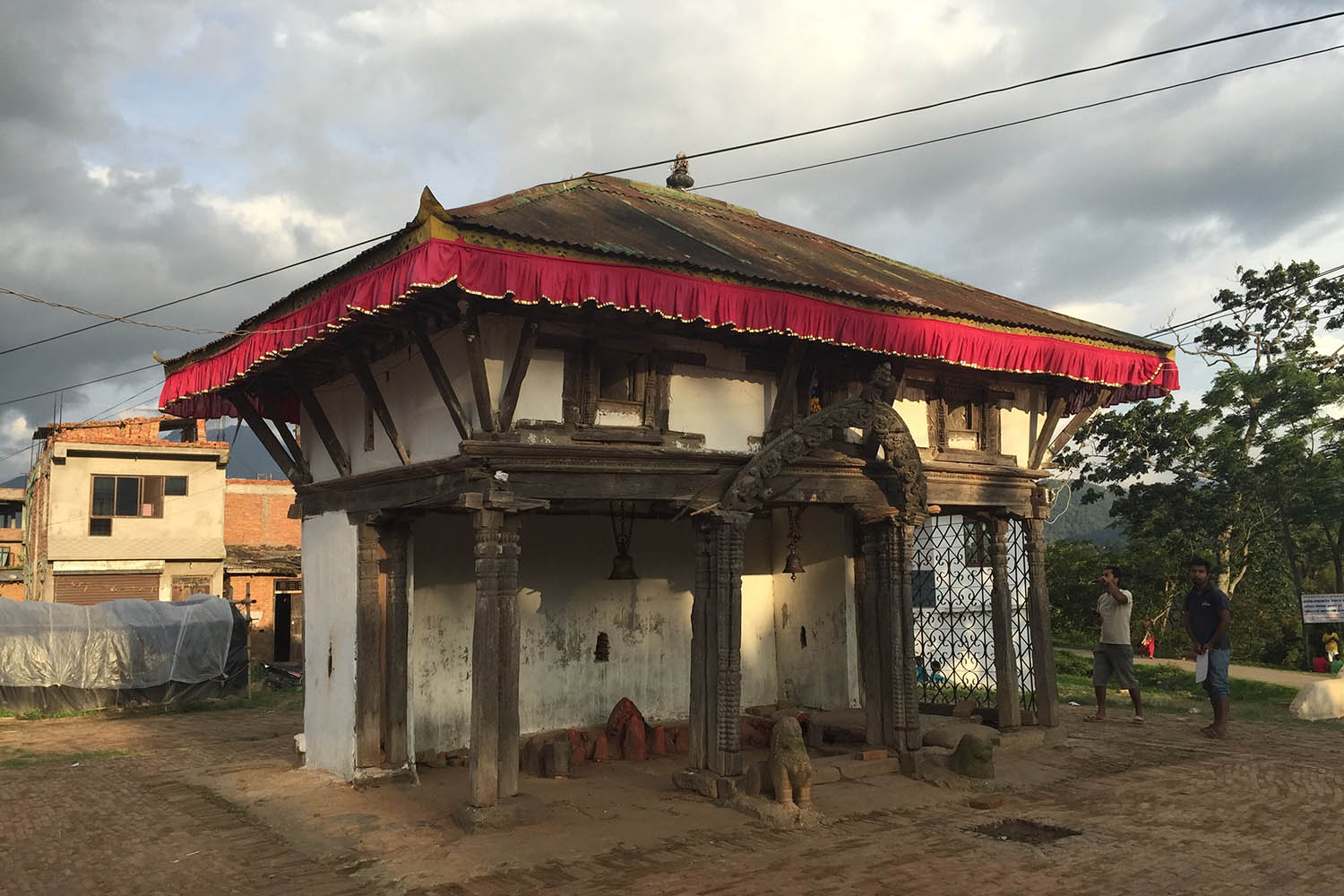

Nawa Durga
The Nawa Durga goddess and dance are well-known across Nepal, with Thecho being particularly famous. The Nawa Durga temple holds great cultural significance and history. Though there is no exact record of its establishment, it is believed to have been built during the Lichhavi period, about 1,400 to 1,500 years ago.
Jitendra Mali, the temple’s guthiyar, explains, “The temple started as a simple hut and was gradually rebuilt into a one-story structure with the community’s help. Over time, it has been renovated and modified as needed. Locals believe there is little written history about the temple because people were afraid to document it due to the goddesses’ strong and dangerous powers. In the past, the intense spiritual energy of the temple made people hesitant to visit, keeping it hidden and contributing to the lack of historical records.”
Originally managed by Nhesa Guthi, the temple was later entrusted to the Malakars. Gopal Mali, the chief priest, explains that Manmaneswari (Old Taleju Bhawani) and Nawa Durga Devi were friends. During the Lichhavi period, Nawa Durga Devi and the people of Thecho helped King Mandev defeat the Kirant Kingdom. To honour this victory, Nawa Durga Devi visits Manmaneswari on Tika day. The rituals of Nawa Durga Devi and the Lichhavi Kingdom are closely linked, as Manmaneswari’s rituals only begin after Nawa Durga Devi’s are completed.
According to Pach Bhai Mali, guthiyar of the temple, “The major festivals of this temple are 12 Barsa Mela, Thecho Jatra and Dashain. The Nawa Durga Nach is performed seven times a year. The temple is worshipped by doing tantric bidhi, and a buffalo is sacrificed five times, ducks two times, and male goat once.” He added, “Every year, artists from Tangal, Patan come and repaint the Nawa Durga Masks. If the costumes and masks are damaged, chyama puja is done, and they are changed.
The Shree Nawadurga Bhawani Devi Guthi oversees the temple and supervised its reconstruction. The Department of Archaeology allocated over twenty million for the project, but the final bidding amount was 28 percent less. Pachali Bhairab and Manakamana Construction Company carried out the reconstruction.
The temple was demolished in January 2020, and the reconstruction was completed immediately. It was completed on November 4, 2021, on Laxmi Puja's day. Gopal says, “The lockdown caused a little delay in the construction as the workers couldn’t come to work and the essential materials couldn’t be brought. Otherwise, it would’ve been completed within a year.” He added that the workers lived in Dya Chhen of Nawa Durga temple during the lockdown to continue the construction work.
Pach Bhai said, “The new temple is slightly different from the old one. Before, the temple was a two-storey building. But, now one more storey and a gajur have also been added. Moreover, a toilet was also constructed using the municipality’s budget. New designs and a ceiling of iron with the designs of different gods are added in the room where the statues and masks are. The roof has also been changed from mud tiles to zinc metal.”




 14.83°C Kathmandu
14.83°C Kathmandu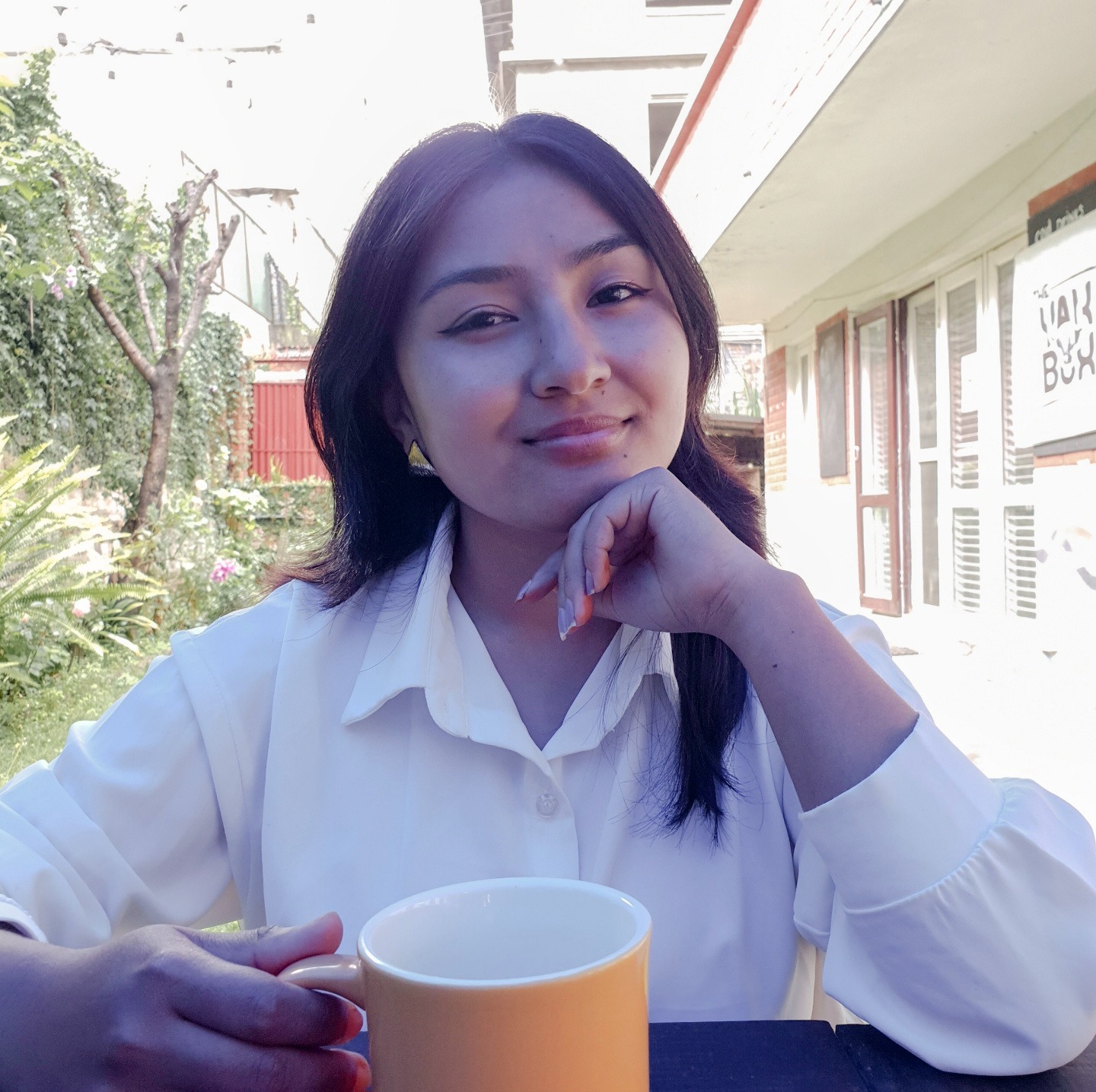

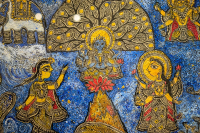
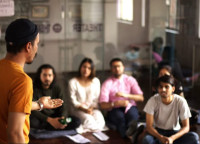
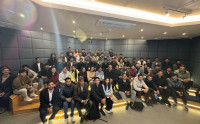









%20(1).jpg&w=300&height=200)

